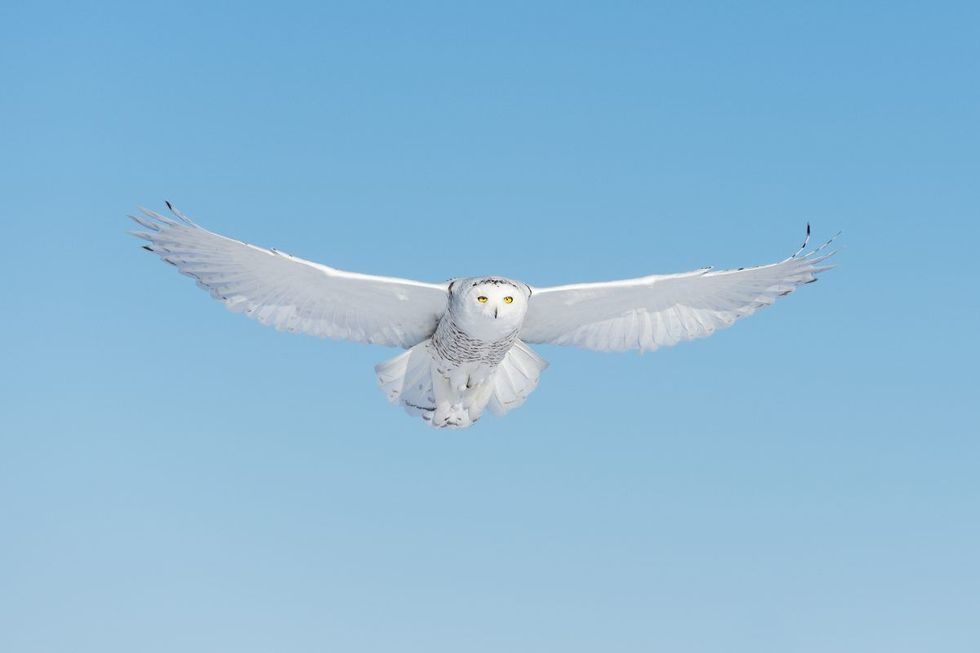The all-white arctic owl only visits Indiana during cyclical "irruptions" occurring every four to five years, but often the year following an invasion, such as occurred last winter, can produce an "echo effect," bringing another smaller invasion of owls southward, the organization says in a news release.
Comment: This standard explanation of cyclical irruptions has broken down for the last 7 winters, when exceptional numbers appeared every year. See the links below covering the time period which amply demonstrate this point. Some other environmental and/or climate factors seem to be involved.
Snowy owl numbers fluctuate year to year based on their primary prey — lemmings, giant mouse-like rodents — whose population also oscillates based on food supplies and weather conditions in the arctic. When populations spike, the owls respond with higher than normal breeding, with some nests containing ten or more eggs. The subsequent invasions later that fall result in not so much a food scarcity, but because of the abundance of food earlier that summer. Young owls tend to leave the arctic each winter, resulting in the larger-than-normal invasions.
Sightings in the last week have occurred throughout northern Michigan and Wisconsin, particularly along Lake Michigan and Lake Superior, with the first Indiana sighting occurring in Marshall County last week. Owl fans should be on the watch now for the first snowy owls entering Indiana, said Brad Bumgardner, executive director for the Indiana Audobon society.
More information — including a list of upcoming programs and field trips — is available by logging on to www.indianaaudo bon.org.




Comment: A sample of the many reports for the last 7 seasons:
Winter 2017-18: Highest number of snowy owls ever recorded of 139 in 2017-18 winter across Indiana
Record number of 280 snowy owls counted in Wisconsin this winter
Winter 2016-17: At least 65 Snowy owls invade Bruce County, Ontario
Winter 2015-16: 30 Arctic Snowy owls arrive in Wisconsin; earliest date ever reported and record numbers
Winter 2014-15: An above average winter for sightings of snowy owls in Northeast America
Snowy owl sightings on the rise across the upper US
Winter 2013-14: Huge Snowy Owl invasion becomes official in Canada and U.S.
Winter 2012-13: Mysterious snowy-owl migration one of biggest on record
Winter 2011-12: US: Snowy owls soar south from Arctic in rare mass migration